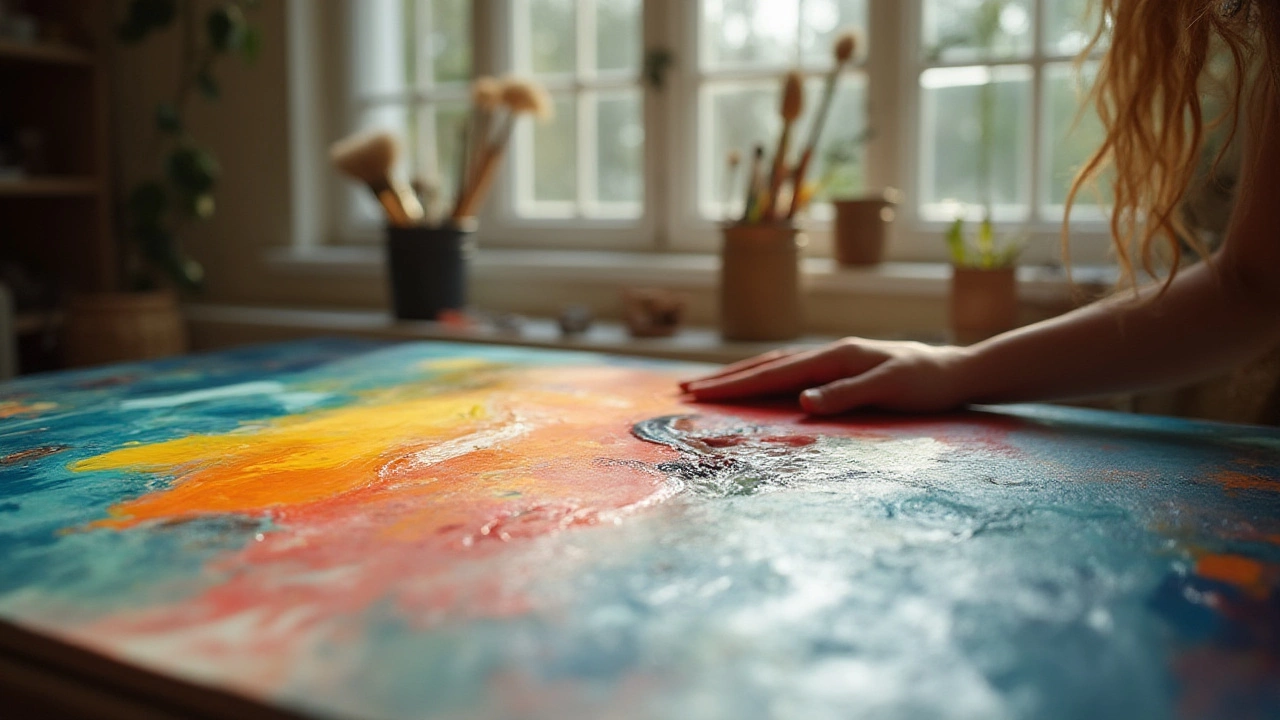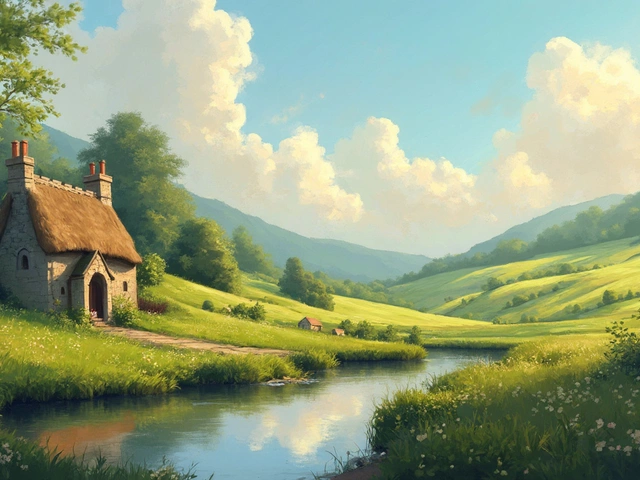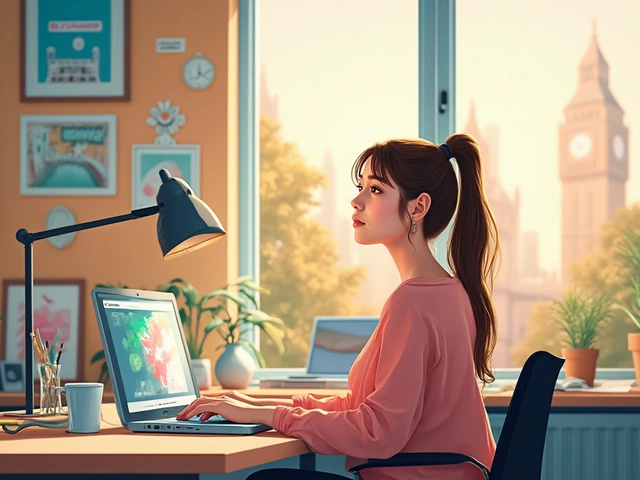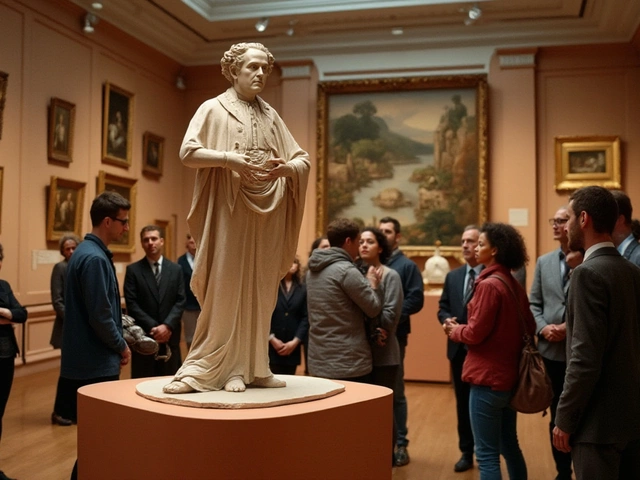Think of a sunset melting into night—colors bleeding together where you can't say where one ends and the other starts. That effect, the magic of soft transitions, is what gives oil paintings their poetic punch. Harsh lines can make even the most detailed art look flat or cartoonish. Getting those blurry, whisper-soft edges? That's not just for the pros with Euro art school diplomas. Anyone with a bit of patience (and yes, messy hands) can pull it off. It’s all about choosing the right technique, knowing your materials, and understanding how your mind reads color meets color on the canvas. Most beginners are surprised to learn that pro painters use a mix of tricks—from simple household brushes to surprising hacks—to nail those perfect transitions. So let's roll up our sleeves and look at every angle of how to blur edges in oil painting for next-level results.
Why Blurring Edges Matters in Oil Painting
Stucco-sharp edges grab attention, but in an oil painting, too many of them look unnatural. If you peer closely at your favorite portraits by Rembrandt or figure studies by Sargent, you’ll see that the best moments disappear into soft, blurry edges. Viewers’ eyes don’t want to linger on every single line—they want places to rest, and areas that hint at mystery. That’s what softening edges achieves: it mimics the way our eyes naturally experience reality. We don’t see the world in hard-edged sections. Instead, things blend gently, especially shadows, backgrounds, hairlines, or fabric folds.
This technique ramps up the storytelling power of your painting. For instance, blurring the edge of a figure’s cheek makes the face look more three-dimensional and helps it sit naturally against a background. Crisp edges only where you want the viewer to focus (think: eyes, mouth, or a shining wine glass) makes the whole painting look more professional—almost photographic but better, with a painter’s warmth. That contrast between blurry and sharp is like the punchline in a good joke: if everything is loud, nothing is special.
If you check out recent museum visitor studies—like a 2023 report from the Getty Conservation Institute—people spend 2–3 times longer looking at paintings where edges seem natural and varied. Our brains literally crave those soft transitions. Whether you’re painting a misty landscape, a still life with fruit, or a thoughtful portrait, the power to control which areas fade and which pop lets you play director and tell the story your way. So, learning to blur edges isn’t optional, it’s a superpower.
Sometimes, too, the soft edge isn’t just about beauty—it’s practical. If you mess up a section and the details don’t align perfectly, blending those edges can fix mistakes without anyone being the wiser. Countless old masters apparently touched up their work with a thumb smudge or a clever swipe of a dry brush—small, almost invisible corrections that made their art sing. Now the same tricks are yours to play with, and you don’t need a time machine or Renaissance studio to pull them off.
Across genres—from the swirling clouds of Turner’s Romantic seascapes to the crisp-meets-blurry petals of Georgia O’Keeffe—knowing when (and how) to blur an edge is a skill the best artists use all the time. Next time you’re in a gallery, look for it—it’s everywhere once you know what to see. So, if you’re after depth, realism, and that juicy painterly magic, mastering edge blur is non-negotiable.
Essential Tools and Materials for Softening Oil Paint Edges
You don’t have to buy out the art store to blur paint edges. But, picking the right tools—plus a few household hacks—makes a world of difference. Let's lay out everything you'll want at your side.
Brushes are the real MVPs here. For basic blending, grab a clean, dry brush with soft bristles—like a sable or synthetic mop. Filbert brushes, with their curved ends, are perfect for gentle feathering because they don’t leave tracks like square-cut brushes can. Larger soft brushes let you blend wide areas, while tiny detail blenders work magic around lips or eyelids. Many pros keep a cheap hardware-store brush around just for scumbling and blending; just wash out those rogue bristles first.
Palette knives? Absolutely. They’re not just for mixing paint. Their flexible metal lets you nudge and merge thick paint without over-blending, perfect for those moments when you want a hint of softness but don’t want things to turn muddy.
Don’t toss out old t-shirts or lint-free rags (seriously, your dryer sheets don’t belong in the studio, but clean cotton rags do). These are dynamite for softening broad edges or wiping away extra paint before blending. Ever see someone gently tap the canvas with a rag? That’s not an accident—it’s a pro trick for hazy, dreamy transitions.
Cotton swabs work for tight corners or tiny areas, but steer clear of any that shed; stray fibers drive artists insane. Some folks even use their fingers—skin’s natural oils give just enough slide. If you’re allergic or fussy, use a makeup sponge (the egg-shaped kind) for cloud-like blends.
Mediums can transform your blending. Traditionalists often stick with linseed oil, but other options like walnut oil or a fast-drying alkyd medium help craft flows, blends, or glazes that push your paint smoother and further. Each medium changes drying times, so here's a quick comparison:
| Medium | Drying Time | Blending Quality |
|---|---|---|
| Linseed Oil | Moderate (2–5 days) | Classic smooth blend |
| Walnut Oil | Slow (up to 7 days) | Very soft, subtle blends |
| Alkyd Medium | Fast (24 hours) | Mild blend, quick drying |
Of course, most of the magic happens on the palette itself. A glass or smooth wooden palette lets you mix colors finely so you’re not trying to do all the blending on the canvas. Palette cups for oil and solvent keep your brush moist, which is crucial: dry bristles drag and mess up soft edges. And always have extra paper towels ready.
For artists who love numbers, here’s a fun stat: in an online poll of 400 oil painters (ArtStack Forum, January 2025), 76% swore by using two separate blending brushes—a clean one for lights, one for darks—to avoid accidental muddy color. That tip alone can save you hours of fixing unexpected browns in your painting. If you’re just starting out, start small: a filbert, a blending mop, and a cotton rag will get you 90% of the way to buttery, blurred edges.
Whatever setup you have, the big takeaway is this: clean tools mean clean blends. Blending with a dirty brush just smears everything into mess. The setup matters, but a little planning—plus dedication to cleaning as you go—keeps your soft transitions looking pro every single time.
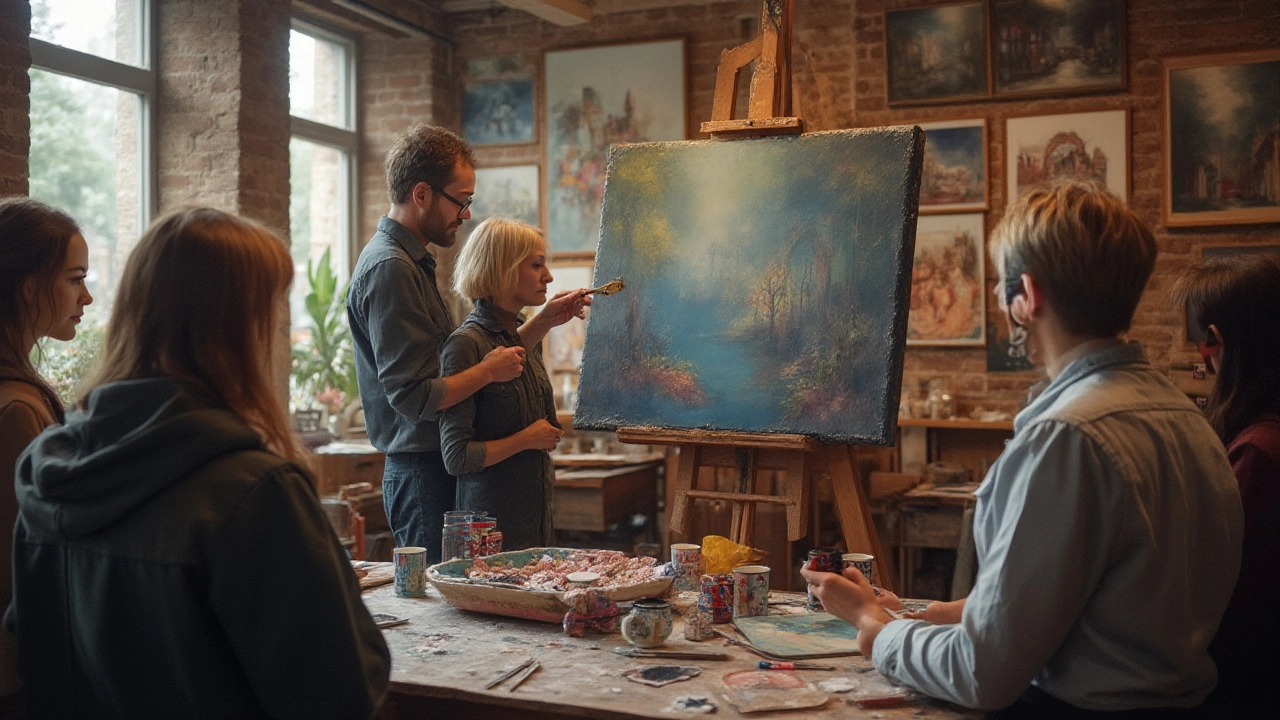
Step-by-Step Techniques for Blurring Oil Painting Edges
Okay, so how do you actually blur that stubborn edge between skin and shadow, or leaf and sky? Whether you’re starting from a wet surface or working into semi-dry paint, a few classic techniques work every time. Once you memorize them, you’ll tackle any painting with confidence.
Oil painting is famous for its slow drying time, so blending is forgiving and stress-free—most days, anyway. Try these step-by-steps next time you want soft transitions.
- Feather Blending (The Classic)
- Lay down both the colors you want to join—like a cheek’s peach and a background blue.
- Clean your blending brush (filbert or mop is best). Wipe out extra paint so it’s damp, not wet.
- Very gently, stroke across the edge where the colors meet, moving back and forth, pulling one into the other. Think “petting a kitten” gentle.
- Wipe your brush often; dirty bristles undo your hard work.
- Scumbling for Soft Haze
- Take a mostly dry brush with a touch of paint (or even no new paint at all) and lightly drag it across the hard edge; this picks up and moves some pigment, softening the divide.
- This works especially well for backgrounds or foggy scenes—think hair against sky, or distant hills.
- Blending with Mediums
- Mix a small amount of medium (like linseed oil) into your paint right before it meets another color. The extra slickness lets colors merge without harsh outlines.
- This is ideal for skin, fabric, or anywhere two colors should melt together.
- The Finger or Rag Trick
- With very clean hands (or a cotton rag/span>), gently smudge the edge with a tiny circular motion. This takes away the harshness fast, but care: overdo it and you lose form.
- Dry Brush Blend
- Use a bone-dry soft brush, with no paint added, to whisper over the edge. This lifts and spreads pigment without turning the area muddy. Great for delicate spots.
Some painters use a combo: blend the bulk with a brush, then finish with a finger or rag for those last delicate touches. If you want ultra-smooth blends (think: photorealistic skin), work while the paint is still slightly wet but tacky—not runny. On the flip side, if you want only a slight softening, wait until the surface is semi-dry and blend with a barely damp brush.
Never underestimate the value of stepping back and squinting at your work. This lets you see where the eye is getting hung up on unwanted hard transitions. Blurred edges should be strategic—every soft patch draws focus toward your crispest, most important details.
If you’re feeling stuck, take inspiration from some painterly legends. John Singer Sargent often described “losing and finding the edge”—start by softening too much, then add sharpness back with a flick of bright paint. That give and take is the painter’s true dance. And remember: the most important edge is the one between what you want people to notice and what you want to fade into a dream. Don’t be afraid to experiment. Every painting is a new look at how color meets color, and blurring those seams is as much gut instinct as textbook technique.
A tip many artists swear by: If you blur an area and lose too much contrast, you can always repaint the edge with clean, opaque color. Edges aren’t permanent—oil paint is all about forgiveness and creative trade-offs. One last trick? Paint with both hands—one adding new color, the other softly blending. It takes practice but saves time!
Common Mistakes and Pro Tips for Cleaner, Better Blends
Even masters have off days. Nothing is more frustrating than muddy patches or edges that disappear so much your painting looks out of focus. But there’s always a reason things go sideways, and fixing the most common mistakes will get you back on track.
First mistake: Over-blending. If you brush back and forth too many times, everything merges into gray mush, especially if you’re mixing wet paint with lots of different colors on the canvas. To avoid this, use a “less is more” mindset. Blend softly, then step back—most of the time, a few brush strokes do the trick. It's always easier to blur a bit more than to bring back lost contrast.
Next up: Dirty tools. Blending with a brush that’s full of dark paint while working on a light skin area is a recipe for disaster. Wipe your brush between each blending move; keep two towels on hand—one for color removal, one for quick drying. The cleaner the bristles, the sharper your soft edges stay.
Muddiness also sneaks in if you try to blend across layers that aren’t equally wet. Mixing sticky, half-dry layers with a wet brush pulls up weird globs or leaves streaks instead of a gentle transition. A good fix is “fat over lean”—always apply softer, oilier paint on top of firmer, drier layers. If all else fails, let the painting dry for a day, then glaze a semi-transparent color on top to patch up rough spots.
Want dreamy but realistic edges? Don’t soften the whole painting. Only blur places where the object meets shadow, or where you want background colors to “kiss” foregrounds. If you blend the outline of every item, forms lose punch and the painting ends up looking flat. Use hard edges sparingly to command attention.
Here are a few pro-level hacks that even stubborn problem areas can’t survive:
- Always squint at your painting from across the room. Are the important edges popping? If not, sharpen them up with a detail brush.
- Try “charging” a clean brush with a micro-dot of solvent like odorless mineral spirits for extra-soft blends—especially in the underpainting stage.
- If your soft edge picks up too much color, clean the brush, then gently dab (not drag) for a cloudlike fix.
- Experiment with double brushes—one just for blending edges, never touched by raw paint.
- Add a little medium to your brush, not the canvas. This gives more control and keeps edges neat.
- If you want a dry, hazy look—like Turner’s fog—try blending when the paint begins to set, not when it’s gooey.
A study from the National Gallery London in late 2024 found that paintings with well-controlled edges (about 70% soft, 30% sharp) drew more positive reactions in blind viewer tests than those with uniform edges. Turns out, our brains still want clarity, but not everywhere all at once.
Finally, always give yourself permission to wipe off a failed blend and start over. No work is wasted—it’s all practice, and every mistake makes the next painting smoother. With a few thoughtful tweaks, you’ll see your art transform. And that first moment when a blurred, glowing edge makes a figure or fruit look 3D? That’s pure alchemy, the magic that keeps painters coming back to the easel.
